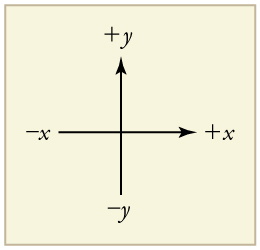| << Chapter < Page | Chapter >> Page > |

A person's speed can stay the same as he or she rounds a corner and changes direction. Given this information, is speed a scalar or a vector quantity? Explain.
Speed is a scalar quantity. It does not change at all with direction changes; therefore, it has magnitude only. If it were a vector quantity, it would change as direction changes (even if its magnitude remained constant).
A student writes, “ A bird that is diving for prey has a speed of .” What is wrong with the student's statement? What has the student actually described? Explain.
What is the speed of the bird in [link] ?
Acceleration is the change in velocity over time. Given this information, is acceleration a vector or a scalar quantity? Explain.
A weather forecast states that the temperature is predicted to be the following day. Is this temperature a vector or a scalar quantity? Explain.
A fundamental tenet of physics is that information about an event can be gathered from a variety of reference frames. For example, imagine that you are a passenger walking toward the front of a bus. As you walk, your motion is observed by a fellow bus passenger and by an observer standing on the sidewalk.
Both the bus passenger and sidewalk observer will be able to collect information about you. They can determine how far you moved and how much time it took you to do so. However, while you moved at a consistent pace, both observers will get different results. To the passenger sitting on the bus, you moved forward at what one would consider a normal pace, something similar to how quickly you would walk outside on a sunny day. To the sidewalk observer though, you will have moved much quicker. Because the bus is also moving forward, the distance you move forward against the sidewalk each second increases, and the sidewalk observer must conclude that you are moving at a greater pace.
To show that you understand this concept, you will need to create an event and think of a way to view this event from two different frames of reference. In order to ensure that the event is being observed simultaneously from both frames, you will need an assistant to help out. An example of a possible event is to have a friend ride on a skateboard while tossing a ball. How will your friend observe the ball toss, and how will those observations be different from your own?
Your task is to describe your event and the observations of your event from both frames of reference. Answer the following questions below to demonstrate your understanding. For assistance, you can review the information given in the ‘Position' paragraph at the start of Section 2.1.
A student is trying to determine the acceleration of a feather as she drops it to the ground. If the student is looking to achieve a positive velocity and positive acceleration, what is the most sensible way to set up her coordinate system?

Notification Switch
Would you like to follow the 'College physics for ap® courses' conversation and receive update notifications?